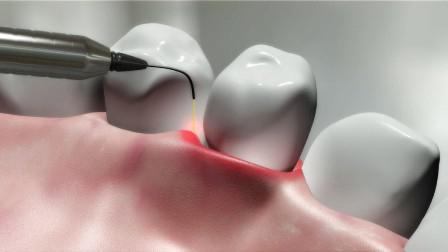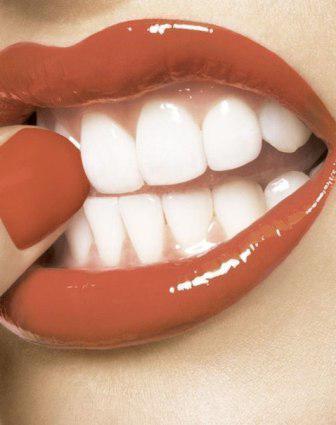Many people mistakenly believe that tartar is only an aesthetic defect. Gums and teeth do not hurt, which means there is no reason for a visit to the dentist. However, very often tartar leads to the development of various diseases of the oral cavity. How to get rid of such a nuisance, and what is the cause of this shortcoming? We discuss this in the article.
What is tartar?
A closer look at the tooth enamel next to the gums from the outside or from the inside reveals brown stains and stains. These deposits are tartar. Another name is calculus. This characteristic color is given to it by numerous bacteria, particles of dead cells, salt deposits. Mostly tartar is formed in hard-to-reach places, where it is very difficult to get a toothbrush or floss. Solid food doesn’t always get there either, so there is no natural cleansing.
Causes of calculus formation
Plaque and stone in most cases are formed as a result of improper oral hygiene. Also, the cause of this phenomenon may be an unhealthy environment in the oral cavity. After eating, the remnants of food are mixed with saliva and bacteria and form a coating on the surface of the teeth. It can be easily removed with a regular toothbrush or floss, provided that they are used regularly. If you brush your teeth irregularly, and the composition of saliva in your mouth is broken, then over time the yellow coating hardens and turns into mineralized deposits. You can remove them only with the help of special devices.
Stages of tartar
The process takes place in the following sequence:
Deposition on the teeth of soft bacterial plaque.
Hardening of deposits within a few days.
Saturation of plaque with phosphorus and calcium - mineralization.
If there is no treatment, the stone begins to grow under and above the gum. Over time, plaque can no longer be removed with a conventional toothbrush. It is necessary to carry out professional brushing. Removing tartar is an extremely important procedure for maintaining healthy oral cavity.
Special Toothpastes
On the shelves of pharmacies and shops you can find a variety of oral care products. For example, a special toothpaste from tartar . It contains polishing and abrasive components, as well as enzymes (papain, bromelain) and pyrophosphates, under the influence of which softening and removal of mineralized microbial plaque occurs. Toothpaste from tartar can only cope with small deposits. Intensively whitening pastes with a high abrasion index will be especially effective. However, such a paste will not be effective in a neglected state if there is massive pigment plaque and tartar. In this case, the dentist will tell you how to get rid of deposits after a thorough examination of the oral cavity.
Calculus removal methods
So, tartar - how to get rid of it? First of all, you need to know that such a procedure should be carried out in the dental office. If you decide to use alternative methods, you should first consult with a specialist. Many of them are not only useless, but can also cause serious harm to the teeth (for example, the use of sand). Previously, calculus was removed mechanically using special hooks. Later, this method was abandoned, because this procedure was painful, ineffective, after it there were damage to the teeth and gums. How is tartar removed today? There are several effective ways.
Ultrasound
If you decide to remove tartar, ultrasound can do this efficiently and quickly. After this procedure, the teeth and gums are completely cleansed of calculus. The ultrasound apparatus causes vibrations and vibration of a certain frequency, under the influence of which there is a gentle cleaning of the tooth surface from fossils. Due to the effect of cavitation (strong turbulence of the liquid), the nozzle of the device does not touch the surface of the tooth, which eliminates injury. In addition, during the process, oxygen is released from the water, which has a disinfecting effect on the treated area. The root and gums are also mechanically cleaned. This procedure is absolutely bloodless and painless, only with increased sensitivity, the removal of calculus occurs with the use of anesthetic gel. Those who performed the removal of tartar in this way, leave positive reviews about the procedure. However, you should be aware that the use of ultrasonic cleaning in the presence of cardiovascular diseases must be extremely careful. If there is a pacemaker, this procedure is strictly contraindicated.

Laser
To eliminate tartar, a laser is also used. However, this method is less popular than ultrasound. This procedure is similar to ultrasonic brushing and is aimed at crushing mineral deposits. But such equipment is much more expensive than an ultrasound device and is not available in all clinics.
Air flow method
This is an air-abrasive treatment in which a solution under pressure is supplied to the surface of the teeth, it consists of abrasive substances and water. During the procedure, yellow plaque and surface pigmentation are removed from the teeth. The Air Flow method is an auxiliary technique after using ultrasound. Air-abrasive treatment eliminates tartar residues in hard-to-reach areas, under its influence enamel is polished and polished. Such a technique can be an independent procedure, but it is effective only against stone formations at the initial stage.
Chemical etching
This method, like Air Flow, acts as an auxiliary procedure. For its use, chemicals (acids or alkalis) are used, under the influence of which tartar dissolves or softens, which facilitates its further removal. Today, this method is practically not applied.
Prevention
We found out why tartar is formed, how to get rid of it - now we also know. You also need to know how to prevent the occurrence of calculus. As mentioned above, toothpaste can be used to prevent and remove small mineral deposits. Fluoride paste will be especially effective. It is biologically active and able to increase the resistance of teeth to the development of caries, which is very important if there is a tendency to the formation of calculus. Whitening pastes for the prevention of tartar are also effective. However, with prolonged use, such a tool can damage the enamel, so it is recommended to alternate it with regular toothpaste. Ultrasonic brushes and irrigators will also help prevent the formation of mineral deposits. The brush heads rotate at high speed (about a thousand movements per minute), so that the plaque is effectively swept out. In addition, for the prevention of tartar, you need to rethink your diet. In your daily diet should be as much as possible raw vegetables and fruits (black radish, apples, carrots, radishes). Such products naturally remove plaque. Also, people who regularly use lemon, peas, birch sap, note a decrease in the formation of calculus.

Some more tips for tartar prevention:
For brushing your teeth, it is recommended to use not only a toothbrush, but also a special floss. It is slippery and flat, due to which it can penetrate even the narrowest interdental spaces.
After each meal, rinse your mouth with a special rinse or at least water.
If you can’t rinse your mouth, you can chew sugarless gum or eat an apple.
Special toothpastes, brushes and proven folk methods as preventative agents, of course, are effective. But if there are large mineral formations, only a dentist-hygienist can remove them. Experts strongly recommend that everyone, without exception, carry out professional hygienic brushing of teeth at least twice a year. This is explained by the fact that tartar is formed on average in six months. A regular visit to the hygienist is a reliable prevention of not only the formation of calculus, but also such serious diseases of the teeth as caries, periodontitis, gingivitis. Therefore, for people who want to have beautiful healthy teeth, professional hygienic cleaning twice a year should be the same natural procedure as the daily use of a toothbrush and toothpaste.